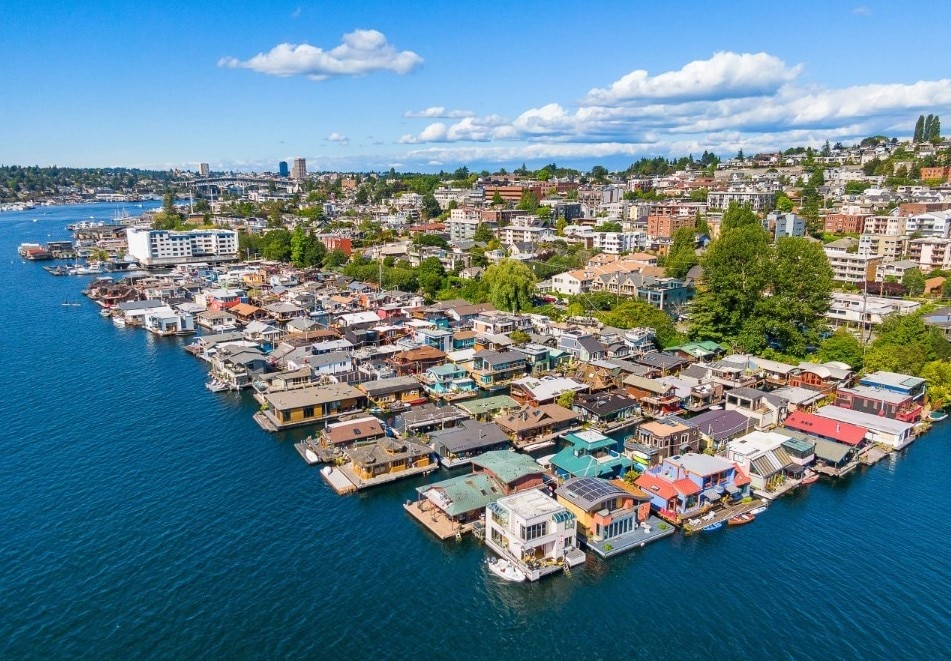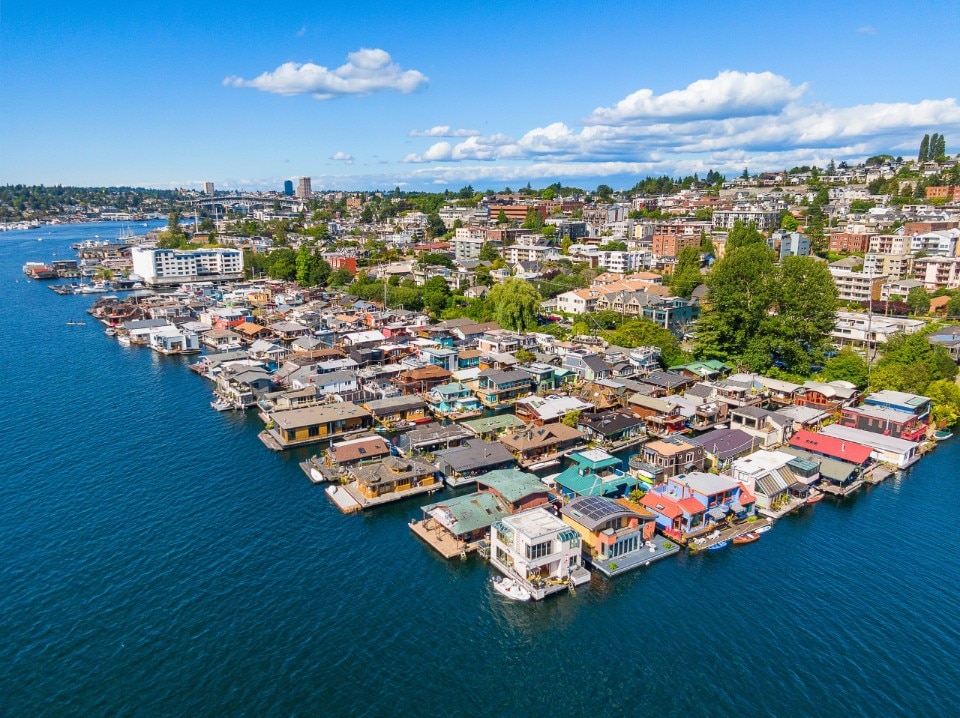A more or less broad group of vessels, designed or adapted for living purposes: many of them remain static and are moored in a fixed place and often connected to the mainland to provide services, in order to be used as permanent dwellings.
Historically, floating neighborhoods can be found in numerous episodes that are heterogeneous in terms of geographic location, expansion and formal characteristics, although they all have in common the desire to move away from ‘mainland’ for specific needs. We can find, in fact, entire villages relocated to the water's edge to defend themselves from enemy attacks as well as new communities created around fishing markets.
Modern houseboats got their main impetus after World War II, when working-class families, unable to find affordable accommodation on land, decided to settle aboard disused work boats. It was at that time that many houseboats began to be equipped with proper sanitary facilities and luxury furnishings, becoming like normal houses, but afloat.
This trend has also become very popular again in the last decade, as a reaction to the housing crisis in the metropolises. For many, living afloat seems to be the only way to own one's own home, achieving a sense of fulfilment and freedom from long-term loans and mortgages, without ignoring the various taxation costs. The consequences of global warming have also recently become a cause of generation for floating neighborhoods.

The phenomenon was soon picked up and translated by the tourism industry. Starting with the iconographic cruise boats — to all intents and purposes describable as entire floating cities — the market immediately knew how to exploit the strong point of the housing type: flexibility. They are, therefore, not only houses ‘on the move’, but also structures that can be easily inhabited for certain months of the year and then used for other purposes during the rest of the year: just think of the interior quarters of boats that can be easily rented on Airbnb in Venice during the Biennale's openings, creating new living scenarios.
Through this collection, we therefore review ten relevant examples of floating districts that, be it for historical reasons or economic necessity challenge living on the mainland.




















